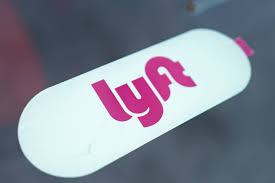Lyft’s First Earnings Report Shows 95% Revenue Growth—and a $1.1 Billion Net Loss

Lyft’s first earnings report since its high-profile IPO proved to be a mixed bag of good and bad news. Revenue growth in the quarter surpassed analyst estimates but the company’s net loss was significantly weighed down by stock-based compensation related to its March 29 offering.
Lyft also announced it was partnering with Waymo, an Alphabet subsidiary working on self-driving cars, to bring a small fleet of autonomous vehicles to the Lyft platform in Phoenix. In the next few months, Lyft customers in Phoenix will have the option to hail a ride from 10 self-driving cars when they are available, Waymo said in a blog post Tuesday afternoon.
Lyft indicated in a call held to discuss earnings that the Waymo partnership won’t be extended to Uber, despite Google’s early investment in the Lyft rival. “We’re in a position to build our own self-driving components,” CEO Logan Green said, explaining that the Waymo arrangement is only one “prong” in its self-driving plans. “We’re agnostic as to where this technology comes from.”
The San Francisco-based ride-hailing company saw its stock initially rise once its earnings figures were announced, erasing the 2% decline that the stock posted during official trading hours. That brief enthusiasm may have been sparked by Lyft’s news that revenue in the first quarter of 2019 surged 95% to $ 776 million, above the $ 739 million that Wall Street had been forecasting.
The news on the bottom line, meanwhile, wasn’t good. Lyft posted a GAAP net loss of $ 1.1 billion, or $ 48.53 a share. The bulk of Lyft’s expenses were related to stock-based compensation. The company’s non-GAAP net loss, which factors out stock-related pay, totaled $ 212 million, down slightly from $ 228 million in the same period a year ago. Analysts had been expecting Lyft to post a non-GAAP loss of $ 274 million.
After its brief rise, Lyft’s stock soon began sinking, falling as low as $ 56.80 a share, or 4.3% below its official closing price Tuesday. That’s 21% below the $ 72 a share offering price of Lyft’s IPO. After popping up on its first day of trading, Lyft’s stock soon began drifting down and has yet to reach its offering price.
In Lyft’s favor, the company benefited from increased demand in the first quarter: Active riders using its app rose 46% to 20.5 million, while revenue per active rider rose 34% to $ 37.86. But the company is still awash in red ink, presenting its executives with the quandary of how to move the company toward profitability without price increases that could send loyal Lyft riders to its chief rival, Uber.
That the bulk of Lyft’s $ 1.1 billion net loss came from stock-based compensation may offer a balm to investors. But it may exacerbate a public-relations battle that Lyft and Uber are waging against drivers who have been agitating for better pay and benefits and who are planning a strike on Wednesday. Lyft’s earnings underscore the gap between contractor pay and employee compensation, which has grown wider in the wake of its IPO.
For Lyft investors, there is also the question of how well the company can continue to hold its own against Uber, which will be raising its own pile of IPO proceeds when it completes its expected IPO this week. The two companies have engaged in price wars in the past—by some counts, they have lost a collective $ 4 billion to date to subsidize cheaper fares to win over riders.
Lyft’s earnings report raised the question of how long it can engage in price wars. The company projected revenue would rise 60% in the current quarter to about $ 805 million. For the full year, Lyft sees revenue rising 52% to around $ 3.29 billion. While both forecasts are encouragingly above what analysts had been estimating, they point to a dramatic slowdown in growth rates from what Lyft saw in the first quarter.
“The first quarter was a strong start to an important year, our first as a public company,” Green said. If as he expects, the economy keeps shifting from car ownership to hailing a ride via app, Lyft remains in a good position as a trailblazer. The problem with blazing trails, however, is that the landscape is nothing if not full of endless speed bumps.










